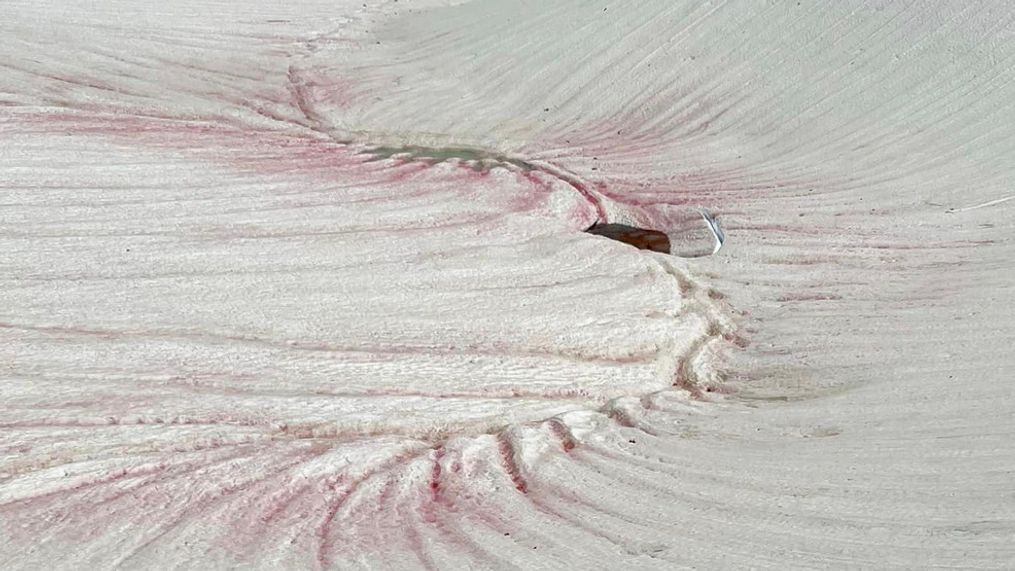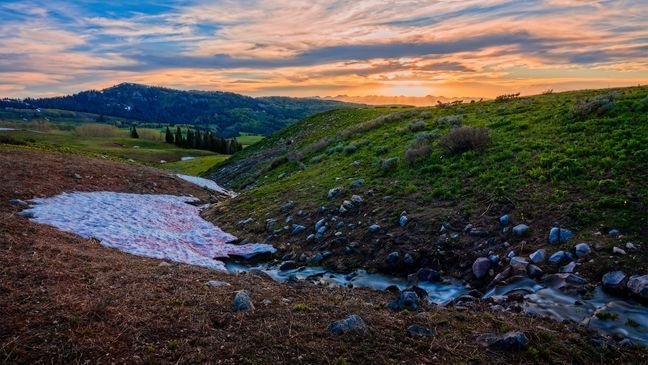'Watermelon snow' turning Utah mountains pink and red
SALT LAKE CITY (KUTV) — Have you seen photos floating around on social media showing red or pink snow in the Utah mountains?
More and more people are seeing pockets of "watermelon snow" at higher elevations. So, what is it?
“Even though it's red, and what people commonly see is red and people call it ‘watermelon’ because it's red, it's actually a green algal bloom," said Scott Hotaling, an assistant professor with Utah State University's Watershed Sciences department. "It's a green algae that lays dormant in the snowpack or in the soil during the summer and winter."
Hotaling has been studying watermelon snow (Chlamydomonas nivalis) for years and is excited that people are starting to talk about it. He studies high mountain systems and the organisms such as snow algae and ice worms, which eat the algae (not present in Utah).
"In the spring, when there's enough moisture in the snowpack and there's the right nutrient combination and temperature, that dormant cyst is triggered to actually move into its more reproductive life stage, and it swims its way to the surface of the snowpack with this little thing, this little piece called a flagella. And then it blooms," Hotaling said. "The bloom is what people actually see. That red pigmentation is part of the blooming reproductive process for the algae's life cycle and that red coloration is actually a red pigment that the algae produced, because they're in a really high UV environment."
Hotaling gets a kick out of the nickname, “watermelon snow.” While it's become a topic of discussion as of late, he says the red or pinkish hues forming in snowfields have been happening in Utah for quite a long time.
"I think it's almost certainly a combination of the fact that we had this gigantic snowpack. There's more available habitat for these snow algae blooms to occur," said Hotaling when asked about the frequency of these blooms this year. "There's a lot of water in the snowpack, which the algae need and then there's just a lot of area for them to grow. I think it just is that combination where we're seeing it more."
Since algal blooms that form on waterbodies can be harmful, it's important to note that “watermelon snow” doesn't appear harmful to humans or even pets, according to Hotaling.
"They're totally harmless to humans directly, their challenge for us and the way they impact human health is more secondarily," said Hotaling. “That's because by producing this pigment and absorbing light, they actually melt snowpack.”




